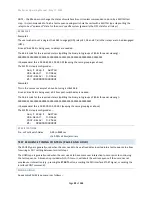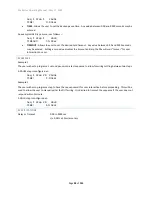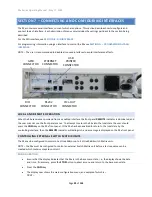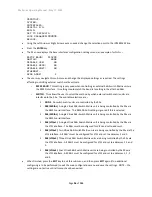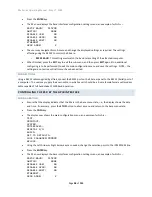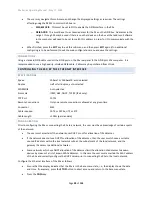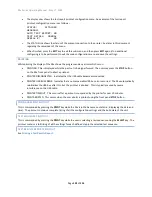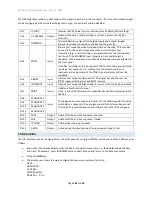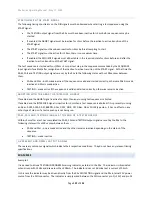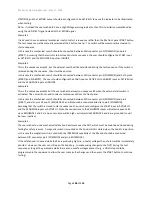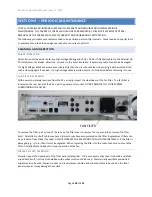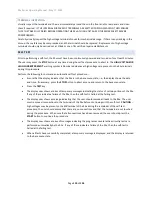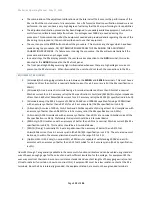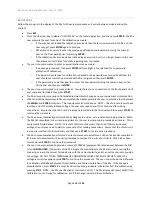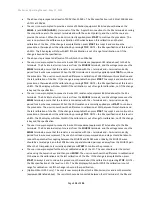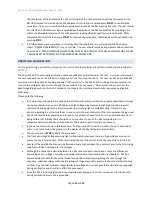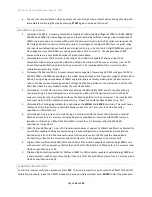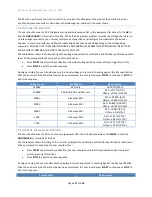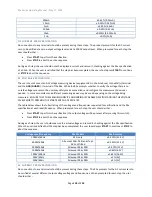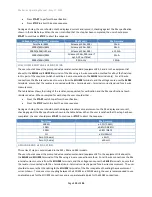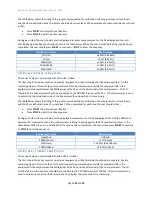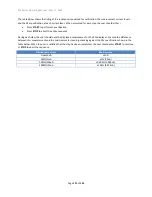
95x Series Operating Manual - May 17, 2022
Page
106
of
155
•
Each has an internal pull-up resistor of nominally 1.8K
Ω
to an internal 4V level and is protected to 5V.
•
Each has a nominally 10nF capacitance to the COMMON signal.
•
Each can be directly interfaced to a contact closure or a TTL, CMOS or LVCMOS logic source. If the input is
to be actively driven from a higher voltage logic signal than 5V (e.g., 12V) then one of the following should
be used
–
•
A suitable value series resistance should be placed in each input signal line to limit the current in the
5V protection to a maximum of 30mA (for 12V logic signals the recommended series resistance is
390
Ω
). The maximum series resistance value allowable is nominally 600
Ω
to achieve the guaranteed
low voltage level.
•
A diode should be placed in series with the signal with its anode connected towards the 95x
connector. This will effectively change the high voltage digital signal to a contact closure type, only
being able to pull the 95x input to the low state and relying on the 95x internal pull-up resistor to
select the high state.
•
A suitable logic level translation circuit should be employed between the high voltage logic and the
95x.
•
An isolation circuit must be employed between the high voltage logic signal and the 95x input.
Each output signal has the following characteristics
–
•
Each has an open-drain drive with >12V withstand and >500mA sink capability (<1.3
Ω
impedance) with a
pull-up resistor of nominally 2.2K
Ω
to an internal 5V level.
•
Each is internally clamped to nominally 16V (14V minimum) so may be used to directly drive a relay.
When using a digital output to drive a 12V relay coil or indicator the user should consider that each
output has a nominally 3.2mA current flow into the 95x when the output is in the off state at +12V. The
user must ensure that this current is insufficient to operate the relay or indicator. If this current is not
acceptable then the signal must be buffered by a suitable driver, e.g., a NPN transistor, N-channel
MOSFET, buffer IC, or an isolation device.
SIGNAL ISOLATION
When operating the 95x in adverse environments having a large amount of ground noise, or when the 95x is being
at very high-test voltage levels, it is recommended to provide isolation between the 95x DIO signals and the
remote device if that is also grounded or has significant capacitance to ground. This avoids transient ground
voltages during DUT breakdown from causing improper operation of the interface. The user should consider using
relays (mechanical or solid state) or logic type optical couplers to provide the isolation. In extreme conditions, the
user may need to take steps to ensure that there is minimum capacitance across the isolation barrier formed by
these components and also that they are specified for the high voltage transients which could occur
–
it is
recommended that isolation devices with a capacitance of <20pF and a voltage withstand capability of >2.5KVpk
be used.
SIGNAL TIMING
In this section there are several references to signals needing to be active or inactive for minimum periods of time.
The time shown is the minimum guaranteed time for the action described to occur, times less than shown may
also function correctly but they are not guaranteed to be reliable.


